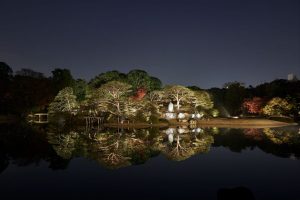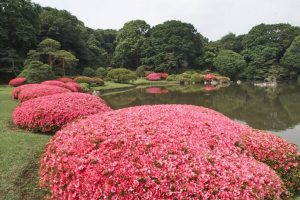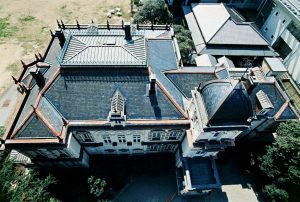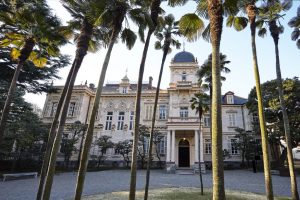We arrive at Kiyosumi Gardens, a 3-minute walk from Kiyosumi-shirakawa Station. It is a modern garden based on a daimyo’s garden of the Edo Period (1603-1868), but completed in the Meiji Era (1868-1912).
Part of the site is said to have been the former villa of Kinokuniya Bunzaemon, a wealthy merchant in Edo, the former name of Tokyo. During the Edo Period, it was the shimoyashiki suburban residence of Kuze Yamato no Kami, the feudal lord of Sekiyado, Shimousa Province. Few documents remain to tell us what the garden looked like at that time. In 1878, Yataro Iwasaki, who had made his fortune in the shipping business, purchased the property and began full-scale work on the garden.
Yataro created the garden for the comfort of his employees and as a place to entertain guests. In 1880, he opened to the public the site as the Fukagawa Shinboku En that includes today’s Kiyosumi Gardens, Kiyosumi Park, and Kiyosumi Park Children’s Park.
Kiyosumi Gardens (Part 1)
In Search of Tokyo Serenity
No.005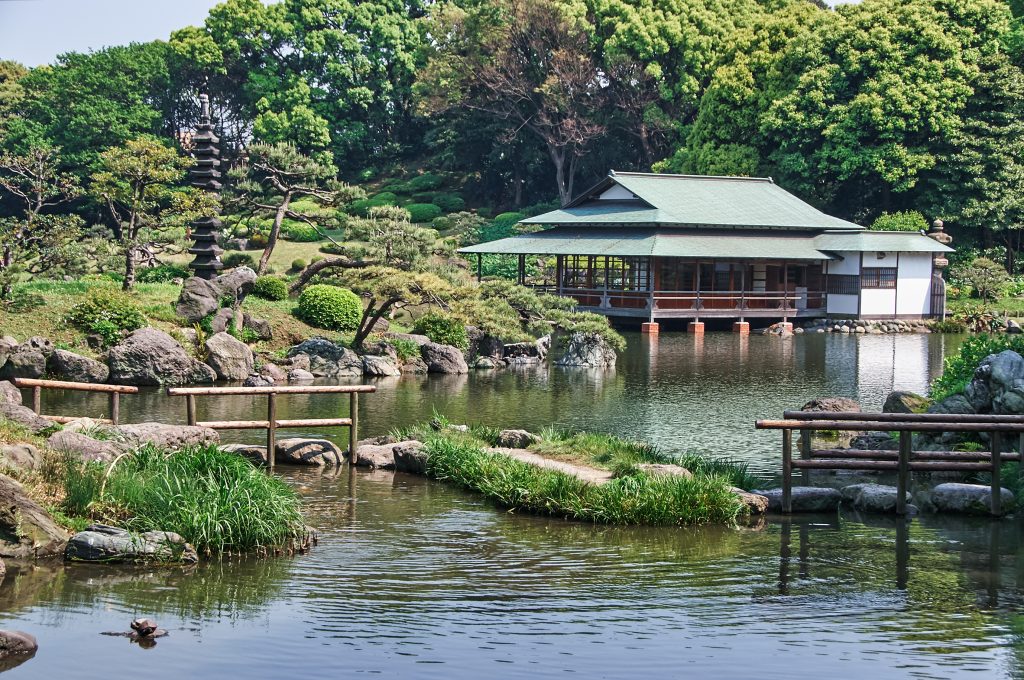
This is a series of articles in which visitors enjoy learning about the charms of Tokyo’s gardens through photographs by photographer Norihisa Kushibiki and commentary by Miho Tanaka, curator at the Edo-Tokyo Museum.
This time, we visited Kiyosumi Gardens, which is associated with the Iwasaki family, one of the great industrialist families of Japan’s modern era. Known as kaiyu shiki rinsen teien* representing the Meiji Era, the beautiful scenery created by famous stones collected from all over the country has become a favorite place of relaxation for residents.
*Kaiyu shiki rinsen teien is a garden style with a garden path encircling a central pond, and the scenery changes as visitors walk the path.
Photo: Norihisa Kushibiki
Story: Miho Tanaka (Curator at Edo-Tokyo Museum)
Cooperation: Tokyo Metropolitan Park Association
Gardens where nature comes alive
.jpg)
Yataro, who had loved stones since a child, used his company’s steamship to collect famous stones from all over Japan and transported them to the garden from the Sumida River. He probably acquired this riverside location for the convenience of landscaping the garden. Because the water was drawn from the Sumida River, the pond used to be tidal, and sunken stepping stones can be seen at the bottom of the water near the shore.

From “Tokyo Vintage Gardens”
Because of its location near the ocean and rivers, the area is home to a variety of fauna, such as carp, turtles, and wild birds.
According to Atsuko Shigeno, the center’s director, many visitors come to the park for bird watching.
“We can get close to the water’s edge, so we can see carp swimming and turtles drying their shells up close. The variety of birds changes with the seasons, but there are always gray herons.”
I was also surprised when I saw a great cormorant. It is not often that we get a chance to see large birds in Tokyo.
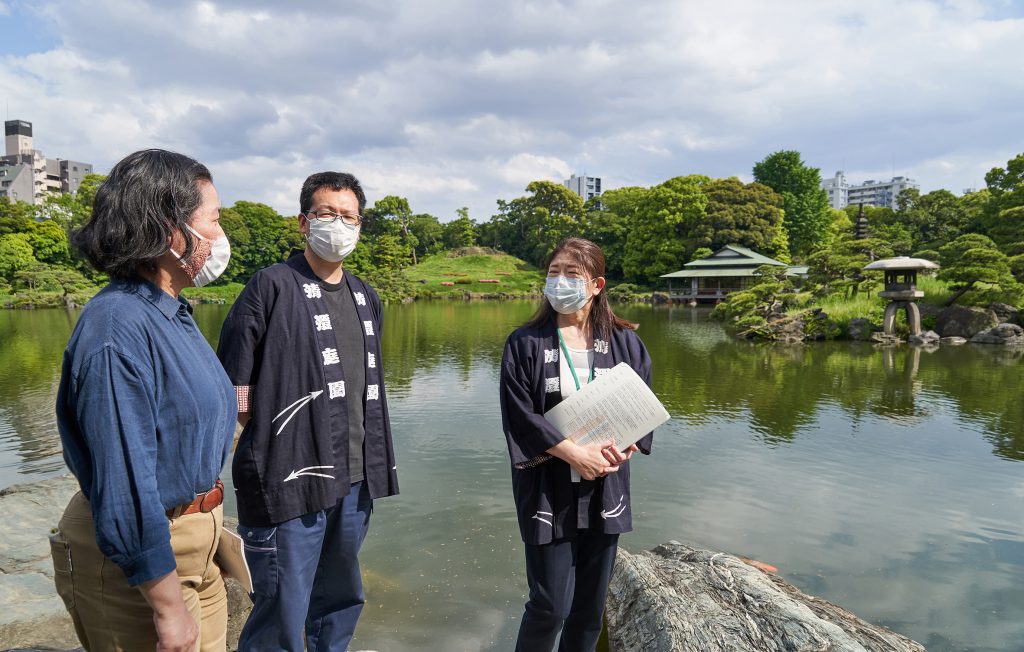
Iwasaki family’s hospitality
In 1885, the Fukagawa Shinboku En garden was taken over by Yataro’s younger brother, Yanosuke. He built two guesthouses in the park, a Western-style red brick building designed by British architect Josiah Conder and a Japanese-style guesthouse. In 1909, Yataro’s eldest son, Hisaya, built the Sukiya-style Ryotei tea house for the reception of British General Kitchener. The building survived the 1923 earthquake and the war damage, and in 2005 it was designated as a Selected Historical Building by the Tokyo Metropolitan Government after undergoing a complete reconstruction.
By the time the Meiji and Taisho eras had passed, Fukagawa Shinboku En was named as Seicho En, and its reputation as a social gathering place with magnificent views and buildings grew.

From “Tokyo Vintage Gardens”
Kiyosumi Gardens is a kaiyu shiki rinsen teien garden where visitors can stroll around the pond and enjoy its natural features, especially the landscaping. The harmony of pine trees and stones is the focus, accented by the colors of the flowers.
The tallest tsukiyama hill was made to look like Mount Fuji, and its summit is covered with lava rock today. During Yanosuke’s reign, guests were treated to a boat ride to view the garden from the pond and a climb up the mountain for a panoramic view of the garden.
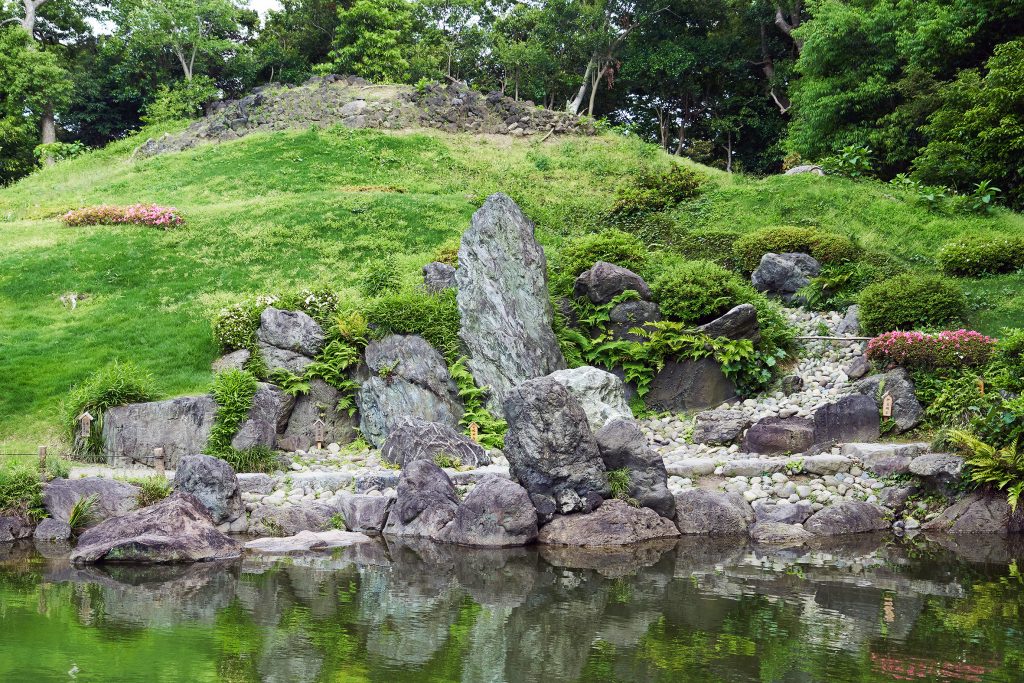
At the foot of Mount Fuji, a Kare-taki dry waterfall is created by combining blue stones with white streaks and small boulders. When I first visited Kiyosumi Gardens, I wondered why there were stones on top of stones. This is because the boulders represent a flowing river and the large rocks represent a waterfall.
According to Naoo Inoue, deputy director of the center, every few years all the boulders at the Kare-taki are collected, polished with a scrubbing brush, and reinstalled. The staff members’ efforts are what maintain this beautiful landscape.
From private gardens to public gardens
As the population grew during the Taisho Era (1912-1926), people began to seek places where they could relieve their daily fatigue and children could run around without any worries.
Hisaya believed that “since we have made our fortune thanks to our country and society, we must give back.” In 1921, he opened part of the gardens to the public as Kiyosumi Yuen park, complete with tennis courts and a sand pit. This location is now Kiyosumi Park Children’s Yuen park.
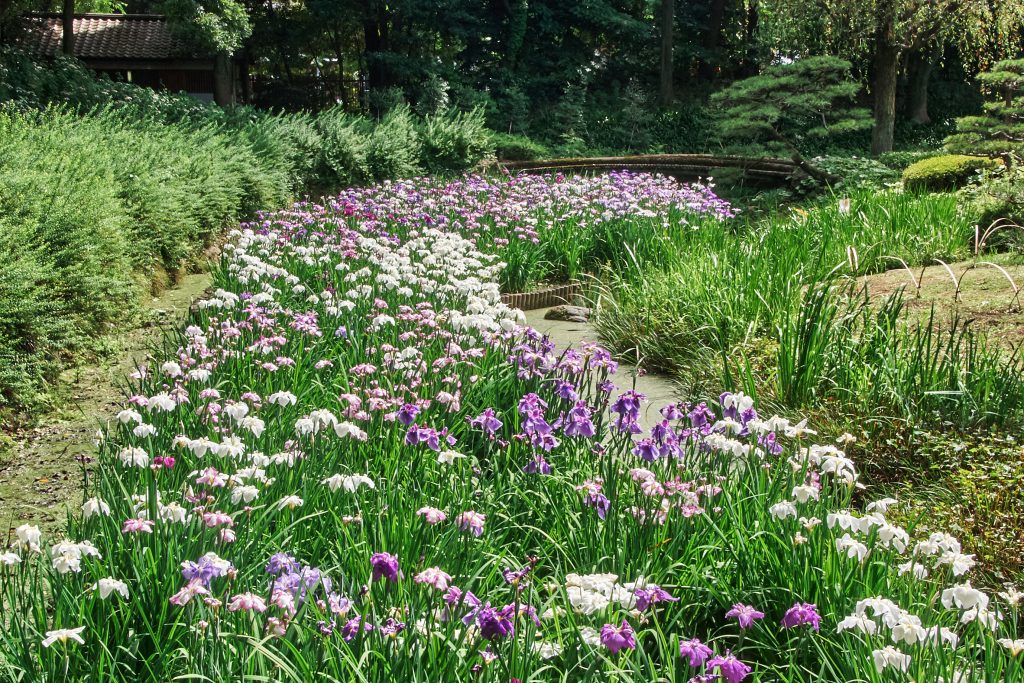
From “Tokyo Vintage Gardens”
The remainder of the gardens was to be donated to the city of Tokyo. But the Great Kanto Earthquake struck in 1923. Although the Ryotei was destroyed by fire, the trees in the gardens acted as a firebreak and prevented it from spreading, saving the lives of some 10,000 evacuees.
Although the stonework of the gardens’ prized stones collapsed, the damage was not serious.
Hisaya was reluctant to open the gardens to the public after seeing it burnt to the ground. However, Kiyoshi Inoshita, then head of the parks department of the city of Tokyo, worked tirelessly to restore the gardens, believing that it should be preserved for future generations.
Thanks to these efforts, the east side, with a total area of 37,434.32 square meters, which was less damaged, was opened as Kiyosumi Gardens in 1932. The west side became Kiyosumi Park in 1977.
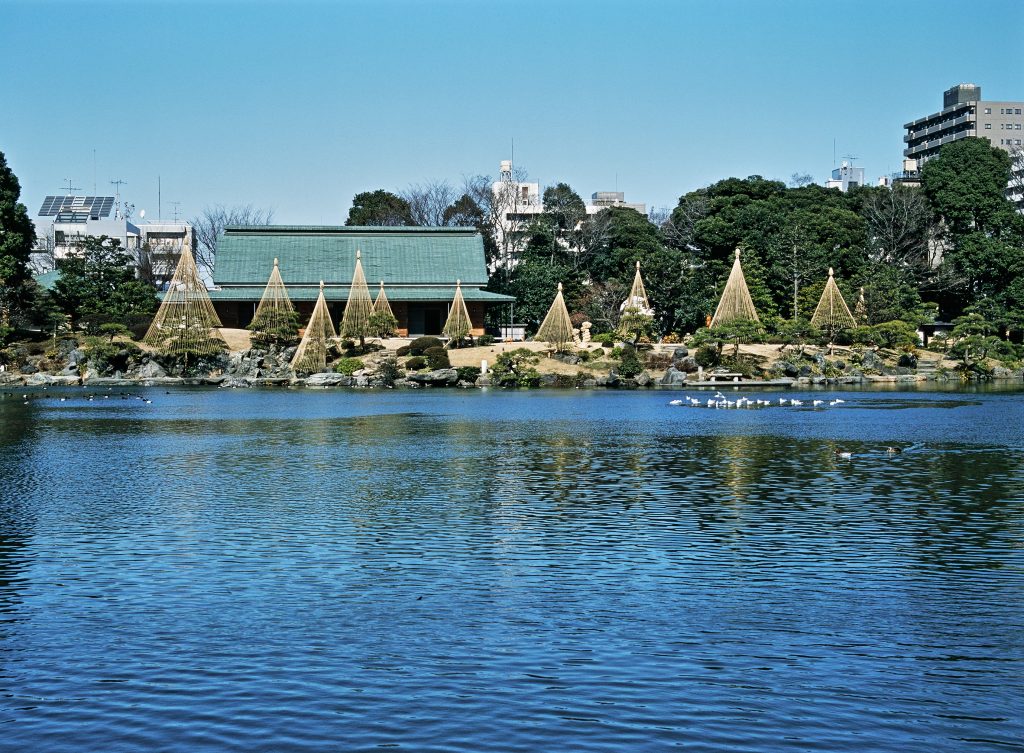
From “Tokyo Vintage Gardens”
As I walked around the park, I noticed that the trees were short. When asked why, I was told that the they were maintained with the primary goal of preserving the existing landscape and passing it on to future generations.
Deputy Director Inoue said, “There were some large pine trees in the old photos, but I think that similar pine trees were not available after the earthquake. Afterwards, the city of Tokyo must have taken over the grand design of the Iwasaki family at that time, but restored the area along realistic lines.”
In the second part of this article, we will look at some of best stones that Yataro carefully selected.
Japanese original text: Yasuna Asano
Translation: Kae Shigeno
Kiyosumi Gardens
Location: 3-3-9 Kiyosumi, Koto-ku, Tokyo
Hours: 9:00 a.m-5:00 p.m. (Last admission: 4:30 p.m.)
Closed: year end and New Year holidays
Admission: 150 yen for adults, 70 yen for individuals aged 65 and over
https://www.tokyo-park.or.jp/park/format/index033.html#googtrans(en)
*Please check the official website for opening information before visiting.
Norihisa Kushibiki
Photographer. Born in Hirosaki, Aomori Prefecture. Active mainly in the fields of advertising and editorial work. Provides portrait photography for numerous celebrities and prominent figures. Took private photos of Giorgio Armani and Gianni Versace. His work as an official photographer of the nine Tokyo metropolitan gardens inspired him to continue taking photos of traditional Japanese-style gardens as his life’s work.
Miho Tanaka
Curator at Edo-Tokyo Museum. Provides explanations of historical materials and delivers lectures on the theme of the relationship between people and flora, and specifically the art of gardening, during the Edo period. Tanaka conducts a course “Traditional Japanese Gardens x Area Guide,” which explores the history of classical gardens in Tokyo from the perspective of local characteristics.


